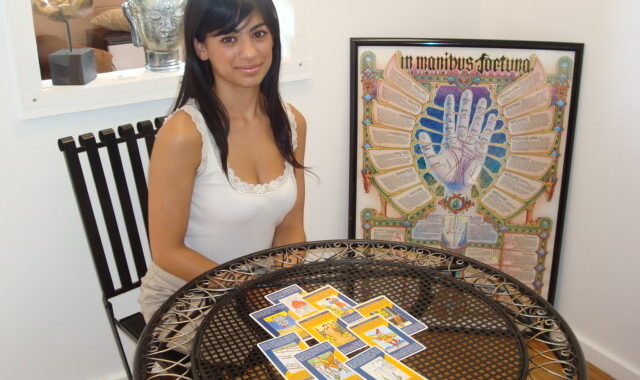Evolution of Psychic Readings

Evolution of Psychic Readings
In the intricate tapestry of human history, there exists a thread of mysticism that has endured through centuries and transcended cultural boundaries. Psychic readings, a mystical practice that claims to unveil hidden truths and foretell the future, have captivated the human imagination for millennia. This article delves deep into the intriguing history and evolution of psychic readings, shedding light on their origins, cultural significance, and their relevance in the modern world.
Unearthing Ancient Origins
The roots of psychic readings can be traced back to the mists of time. Ancient civilizations such as the Egyptians, Greeks, and Chinese all had their own unique forms of divination. In ancient Egypt, priests and priestesses known as oracles were believed to possess the ability to communicate with the gods and offer prophetic insights. The Oracle of Delphi in ancient Greece was another famous institution where seekers sought guidance from a priestess who would channel the wisdom of the god Apollo.
These early forms of divination often involved rituals, symbolism, and the interpretation of natural phenomena like the flight patterns of birds or the position of stars. They reflect humanity’s innate curiosity about the unknown and our desire to seek guidance from sources beyond the tangible world.
The Middle Ages: A Time of Persecution and Secrecy
As history progressed into the Middle Ages, psychic readings took on a different character. During this period, the Church exerted significant influence, and practices that were deemed heretical were met with persecution. Those with psychic mediums abilities often had to operate in secrecy, fearing accusations of witchcraft or sorcery.
Despite the risks, a rich tradition of divination persisted. Tarot cards, for instance, first appeared in the 15th century as playing cards but evolved into a tool for divination. The Tarot deck is comprised of symbolic images that are believed to hold hidden meanings, and skilled readers would interpret these cards to offer insights into the future.
The 19th Century: The Spiritualist Movement
The 19th century witnessed a resurgence of interest in psychic phenomena, marked by the rise of the Spiritualist movement. This movement gained traction in Europe and the United States and centered on the belief that communication with the spirit world was possible. Mediums, individuals with purported abilities to communicate with the deceased, played a central role in Spiritualist gatherings. Séances, where participants attempted to contact spirits, became a popular practice during this period.
One of the most famous mediums of the era was the Fox sisters, who claimed to communicate with a spirit named “Mr. Splitfoot.” Their alleged abilities led to the birth of modern spiritualism and a renewed interest in psychic readings.

The Modern Era: A Multifaceted Landscape
Today, psychic readings have evolved into a multifaceted landscape that encompasses a wide range of practices and beliefs. Some popular forms of psychic readings include:
1. Tarot Card Readings
Tarot cards remain a popular tool for divination, with each card in the deck representing different aspects of life and symbolism.
2. Astrology
Astrologers analyze the positions and movements of celestial bodies to offer insights into an individual’s personality, behavior, and future.
3. Numerology
Numerologists believe that numbers hold mystical significance and can reveal insights into one’s life path and destiny.
4. Clairvoyance
Clairvoyants claim the ability to perceive information about a person or event beyond ordinary sensory perception.
5. Mediumship
Mediums continue to facilitate communication between the living and the deceased, offering comfort and closure to those in mourning.
The Science and Skepticism
The practice of psychic readings has always been met with skepticism, and the modern era is no exception. Many scientists and skeptics argue that psychic phenomena can be explained through psychology, cold reading techniques, or the placebo effect. They view psychic readings as a form of pseudoscience, while believers maintain that there are mysteries beyond the scope of current scientific understanding.
Conclusion: The Enduring Allure of Psychic Readings
The history and evolution of psychic readings reveal a profound aspect of human nature—the timeless quest for meaning and guidance in a world filled with uncertainties. Whether one believes in psychic abilities or not, it is undeniable that these practices have left an indelible mark on our cultural and spiritual history.
In a world driven by data and technology, the mystical allure of psychic readings persists. People continue to seek solace, answers, and a deeper understanding of their lives through these age-old practices. In the end, the history and evolution of psychic readings are a testament to the enduring human desire to explore the realms of the unknown and the mysteries that lie beyond.
